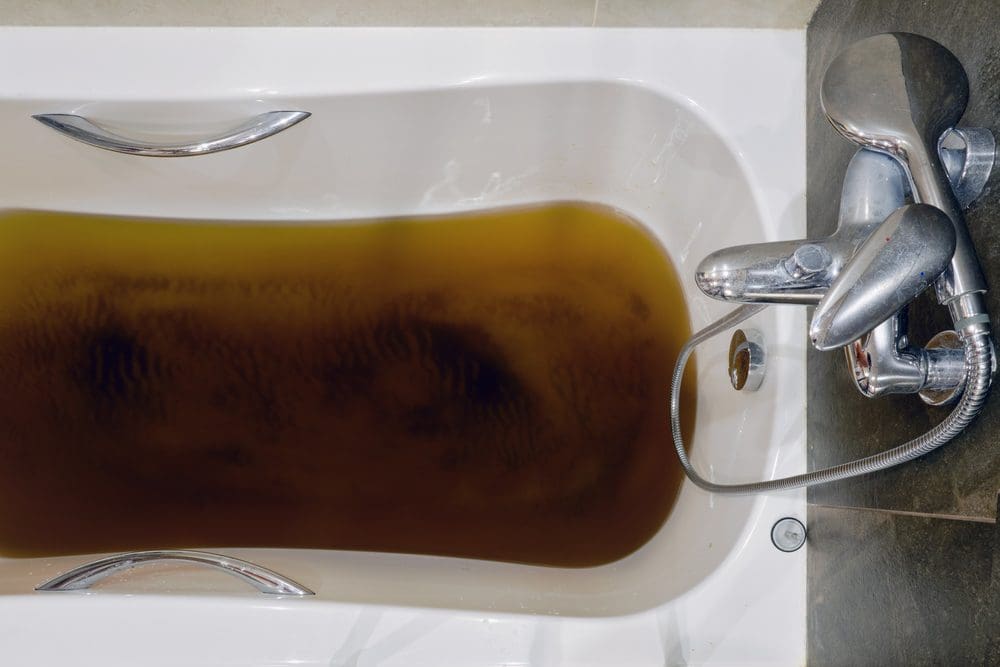Presented here further down you can locate a good deal of extremely good advice involving Why is Sewage Backing Up Into My Bathtub?.

Sewage back-up in the bath tub can be an upsetting and unsanitary issue for any kind of house owner. Not just is it troublesome, but it also poses significant health and wellness risks and suggests underlying problems with the plumbing system. Understanding why sewer is showing up with the bath tub is vital for taking appropriate action to address the issue successfully.
Introduction to the Problem
Understanding the Problem
When sewer draws back up into the tub, it's a clear indicator of an issue with the water drainage system. The wastewater that ought to be streaming far from your home is instead locating its way back right into your home, which can result in substantial damages and health hazards.
Prospective Reasons
Numerous factors can contribute to sewage back-up in the tub. From obstructions in the sewer line to issues with the plumbing facilities, recognizing the origin is important for discovering a solution.
Typical Reasons for Sewage Backup
Obstructions in the Sewer Line
Among the most usual root causes of sewage backup is a blockage in the drain line. This can occur as a result of the build-up of debris, grease, or foreign objects in the pipelines, avoiding appropriate flow and triggering sewage to support right into your bath tub.
Tree Root Intrusion
Tree roots seeking wetness and nutrients can penetrate drain lines through tiny cracks or joints. Gradually, these origins can expand and expand, creating substantial damage to the pipelines and leading to sewage back-up problems.
Aging Infrastructure
Older homes might have outdated plumbing systems that are a lot more susceptible to corrosion, splits, and damage. As pipelines age, they end up being extra susceptible to leaks and clogs, enhancing the likelihood of sewer back-up occurrences.
Heavy Rainfall or Flooding
Throughout durations of heavy rainfall or flooding, the sewer system may become overwhelmed with excess water, causing back-ups and overflows. This can cause sewer backing up into bath tubs and other components inside the home.
Health Risks Related To Sewer Backup
Contamination of Water
Sewer back-up can contaminate the water system in your home, positioning a serious health and wellness risk to you and your household. Exposure to polluted water can result in intestinal problems, skin infections, and various other ailments.
Spread of Disease
Sewer contains unsafe germs, viruses, and parasites that can create a series of diseases, including hepatitis, cholera, and gastroenteritis. Entering into contact with sewage or polluted surfaces places you in danger of infection.
Mold Growth
Wetness from sewage back-up can produce ideal conditions for mold growth in your home. Mold and mildew spores can intensify respiratory system troubles and create allergic reactions in sensitive individuals, making prompt cleaning essential.
Indicators of Sewer Back-up
Foul Odors
Undesirable odors originating from drains pipes or components, particularly in the restroom, might suggest sewer back-up problems. These odors are typically solid and relentless, indicating a problem that calls for immediate attention.
Slow Draining Fixtures
Bath tubs, sinks, and bathrooms that drain gradually or not whatsoever could be experiencing sewage back-up. If several components are affected concurrently, it's most likely that the problem stems from an usual point, such as the primary sewer line.
Gurgling Sounds
Odd gurgling or gurgling noises coming from drains when water is running somewhere else in your home are a sign of air caught in the plumbing system. This air buildup can arise from sewage backup and must be explored immediately.
Immediate Actions to Take
Shutting Off Supply Of Water
In case of sewage backup, it's vital to turn off the water to stop additional contamination and damage. Find the major water shutoff valve in your house and shut it off until the problem can be solved.
Calling a Professional Plumber
Taking care of sewage back-up is not a DIY job. Contact a qualified plumber with experience in dealing with sewage-related problems to analyze the situation and execute essential repair work or cleanups.
Avoiding Contact with Polluted Water
Up until the sewage back-up is resolved, stay clear of contact with infected water to avoid the spread of microorganisms and pathogens. Wear protective equipment if you need to remain in the affected location and wash your hands completely afterward.
Safety nets
Regular Maintenance of Sewage System Lines
Arrange regular examinations and upkeep of your drain lines to determine and address potential concerns prior to they rise into significant issues. This can consist of clearing out particles, examining for tree origin breach, and repairing any damaged pipes.
Installing Bayou Valves
Take into consideration setting up bayou shutoffs in your plumbing system to avoid sewage from flowing back into your home throughout periods of heavy rainfall or flooding. These valves immediately close when water starts backing up, safeguarding your home from contamination.
Proper Disposal of House Waste
Stay clear of purging anything apart from bathroom tissue and human waste down the commode to prevent clogs and clogs in the sewage system line. Dispose of grease, oil, and other house chemicals appropriately to reduce the risk of plumbing troubles.
Tidying up After Sewer Back-up
Sanitation Procedures
Extensively decontaminate and disinfect impacted locations after sewer back-up to get rid of unsafe microorganisms and avoid mold development. Use appropriate cleansing items and protective gear to ensure risk-free and efficient cleanup.
Remediation of Affected Locations
Repair any kind of damage to floor covering, walls, or fixtures brought on by sewage back-up. Depending upon the level of the damages, you may need to replace carpets, drywall, or various other materials to restore your home to its pre-loss condition.
Why Is Water Backing Up in My Bathtub When I Flush My Toilet?
What to do about a sewer line clog
First, don’t bother with plunging. No amount of plunging will dislodge the clog in a sewer line. The clog is too far away. Plungers are for clogs in the toilet itself, not the sewer line. Plus, the most likely causes of a sewer clog are:
- Tree roots
- Flushed toys or feminine products
- Grease buildup
Those items don’t move easily. And in the case of tree roots, the roots need to be cut out of the pipe and the pipe will need to be repaired.
You’ll need a closet auger. A closet auger is a type of plumber’s snake with a protective cover to keep from scratching the delicate porcelain toilet. If the clog is further down, you may need to remove the toilet or use one of your cleanouts to get to the clog.
We also recommend doing a video inspection of the drain to ensure that the cause of the clog has been completely removed. Otherwise, you could have the same problem again in a few days or weeks.
https://mspplumbingheatingair.com/blog/why-is-water-backing-up-in-my-bathtub-when-i-flush-my-toilet

Hopefully you liked our section on . Thanks a lot for taking a few minutes to read our short article. Do you know anybody else who is very much interested in the topic? Please feel free to promote it. Thank you for going through it.
Call Us Today
Comments on “Untangling the Causes of Waste in the Bathtub”